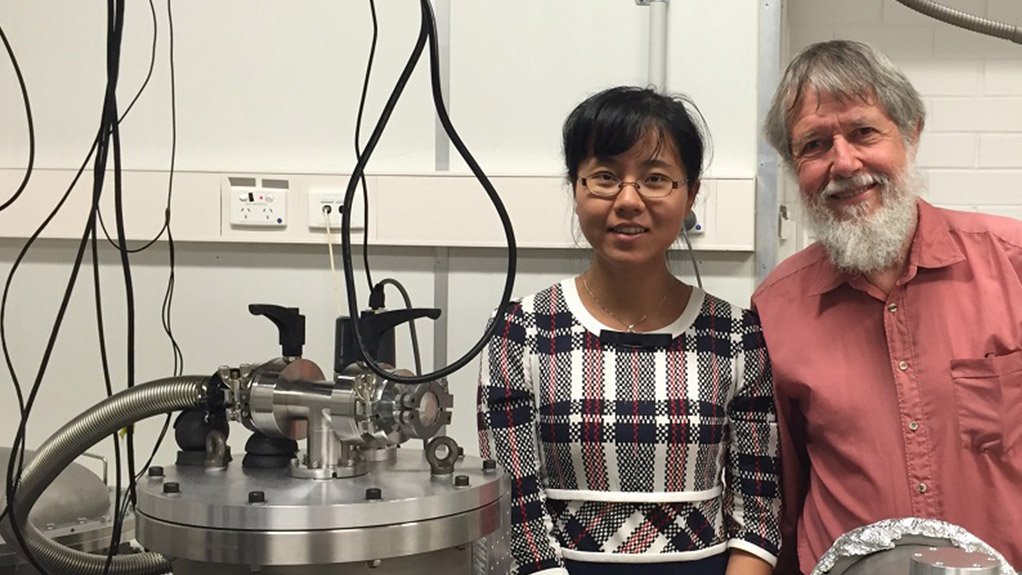New Method Of Detecting Gravitational Waves Will Bring Them Closer
This article has been supplied as a media statement and is not written by Creamer Media. It may be available only for a limited time on this website.
Scientists at The University of Western Australia have discovered new technology which could mean that instead of being detected a billion light years away, gravitational waves may be identified throughout ‘the observable universe’.
Professor David Blair from the Australian International Gravitational Research Centre at UWA said the breakthrough could eventually see hundreds of gravity wave ‘events’ being recorded every day. He said the cutting-edge technology involved tiny new devices known as ‘cat-flap’ pendulums less than a millimetre in size which would be fitted to existing gravitational wave detectors. “Currently the detectors can only detect huge tsunami-like waves, but with the new technology we would be able to extend that range about seven times,” Professor Blair said.
“One of our PhD students Jiayi Qin has tested the concept as part of her thesis with very good results and we will now look to test the technology further.” Professor Blair said UWA’s Centre for Microscopy, Characterisation and Analysis was fabricating the first devices using a new $1 million ion beam etching machine, which had just been installed.
In a world first, scientists announced in February this year that they had observed ripples in the fabric of space-time called gravitational waves, arriving at the earth from a cataclysmic event in the distant universe. The finding confirmed a major prediction of Albert Einstein’s 1915 general theory of relativity and opened an unprecedented new window to the cosmos. UWA is part of an international project team which has spent the past seven years putting together gravitational-wave detector equipment used to regularly measure gravitational waves.
The UWA project team is headed by Professor Blair, and includes researchers Professor Linqing Wen, Professor David Coward, Professor Li Ju, Associate Professor Chunnong Zhao and Dr Eric Howell. The detectors use powerful lasers to measure vibrations of mirrors suspended four kilometres apart at the ends of huge vacuum pipes. Gravitational waves carry information about their dramatic origins and about the nature of gravity that cannot otherwise be obtained.
Physicists have concluded that the detected gravitational waves were produced during the final fraction of a second of the merger of two black holes to produce a single, more massive spinning black hole. This collision of two black holes had been predicted but never observed.
“Gravitational wave technology is already being applied to mineral exploration, time standards, quantum computing, precision sensors, ultra-sensitive radars and pollution monitors,” Professor Blair said.
Comments
Press Office
Announcements
What's On
Subscribe to improve your user experience...
Option 1 (equivalent of R125 a month):
Receive a weekly copy of Creamer Media's Engineering News & Mining Weekly magazine
(print copy for those in South Africa and e-magazine for those outside of South Africa)
Receive daily email newsletters
Access to full search results
Access archive of magazine back copies
Access to Projects in Progress
Access to ONE Research Report of your choice in PDF format
Option 2 (equivalent of R375 a month):
All benefits from Option 1
PLUS
Access to Creamer Media's Research Channel Africa for ALL Research Reports, in PDF format, on various industrial and mining sectors
including Electricity; Water; Energy Transition; Hydrogen; Roads, Rail and Ports; Coal; Gold; Platinum; Battery Metals; etc.
Already a subscriber?
Forgotten your password?
Receive weekly copy of Creamer Media's Engineering News & Mining Weekly magazine (print copy for those in South Africa and e-magazine for those outside of South Africa)
➕
Recieve daily email newsletters
➕
Access to full search results
➕
Access archive of magazine back copies
➕
Access to Projects in Progress
➕
Access to ONE Research Report of your choice in PDF format
RESEARCH CHANNEL AFRICA
R4500 (equivalent of R375 a month)
SUBSCRIBEAll benefits from Option 1
➕
Access to Creamer Media's Research Channel Africa for ALL Research Reports on various industrial and mining sectors, in PDF format, including on:
Electricity
➕
Water
➕
Energy Transition
➕
Hydrogen
➕
Roads, Rail and Ports
➕
Coal
➕
Gold
➕
Platinum
➕
Battery Metals
➕
etc.
Receive all benefits from Option 1 or Option 2 delivered to numerous people at your company
➕
Multiple User names and Passwords for simultaneous log-ins
➕
Intranet integration access to all in your organisation





















